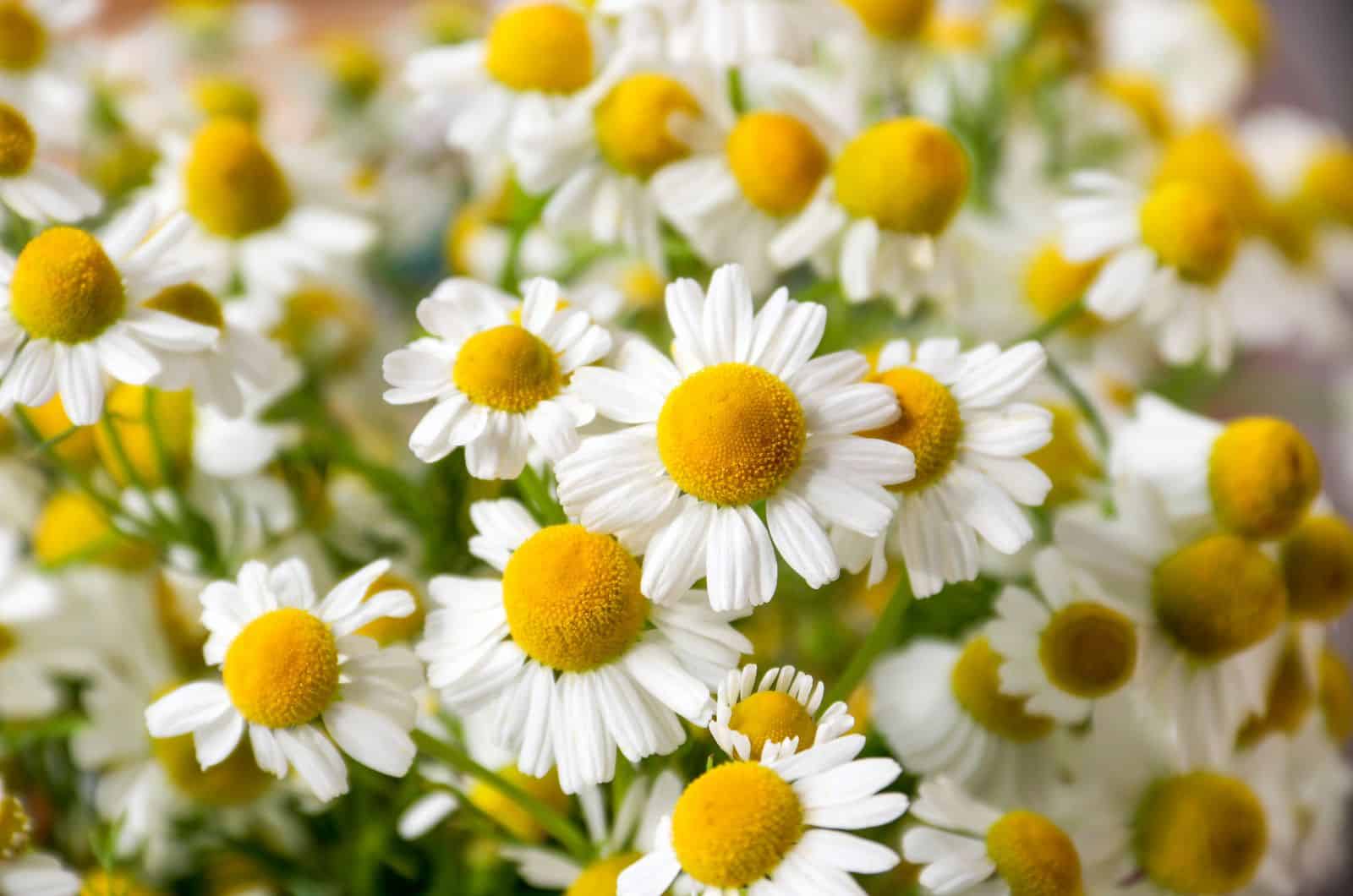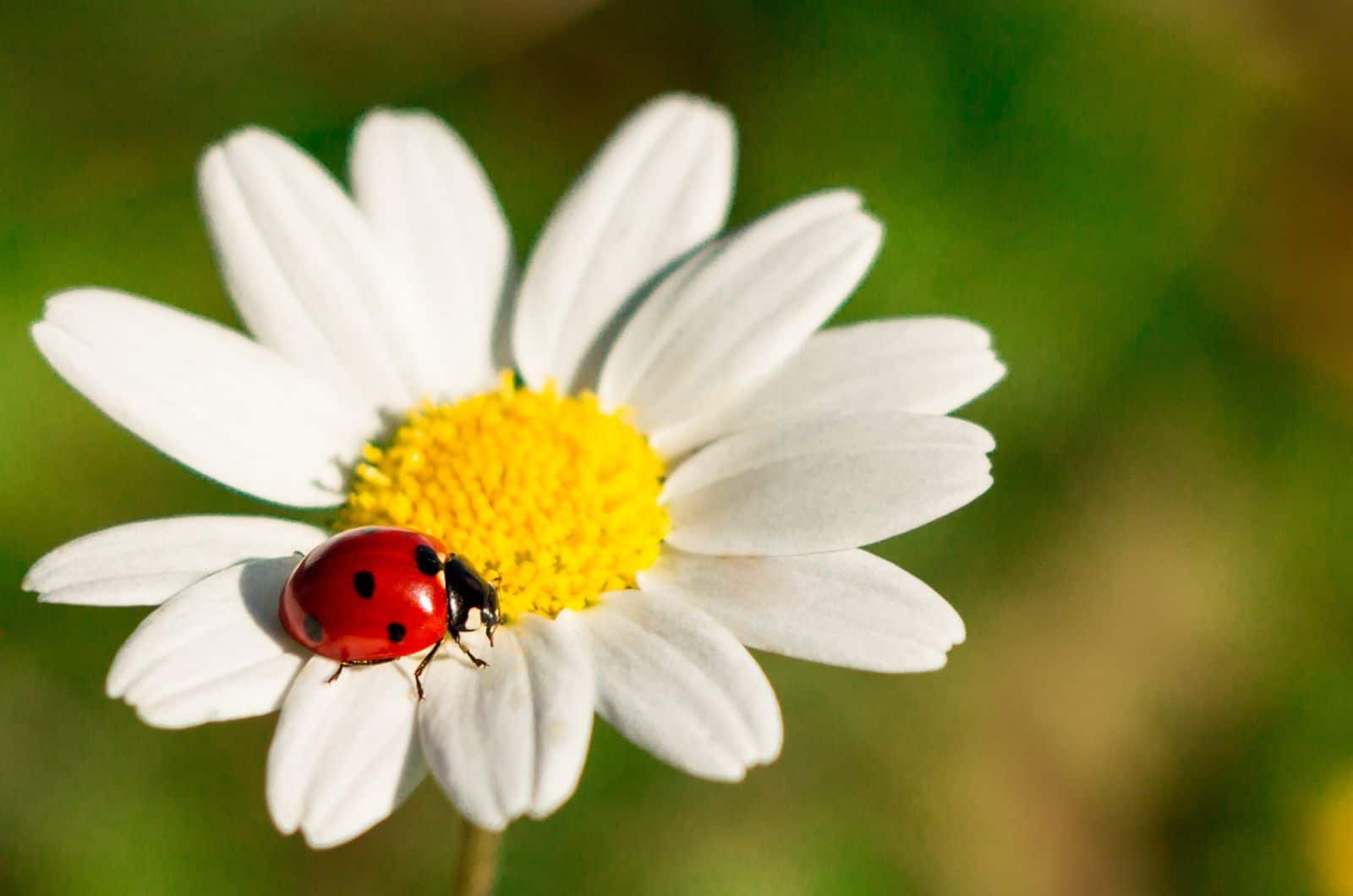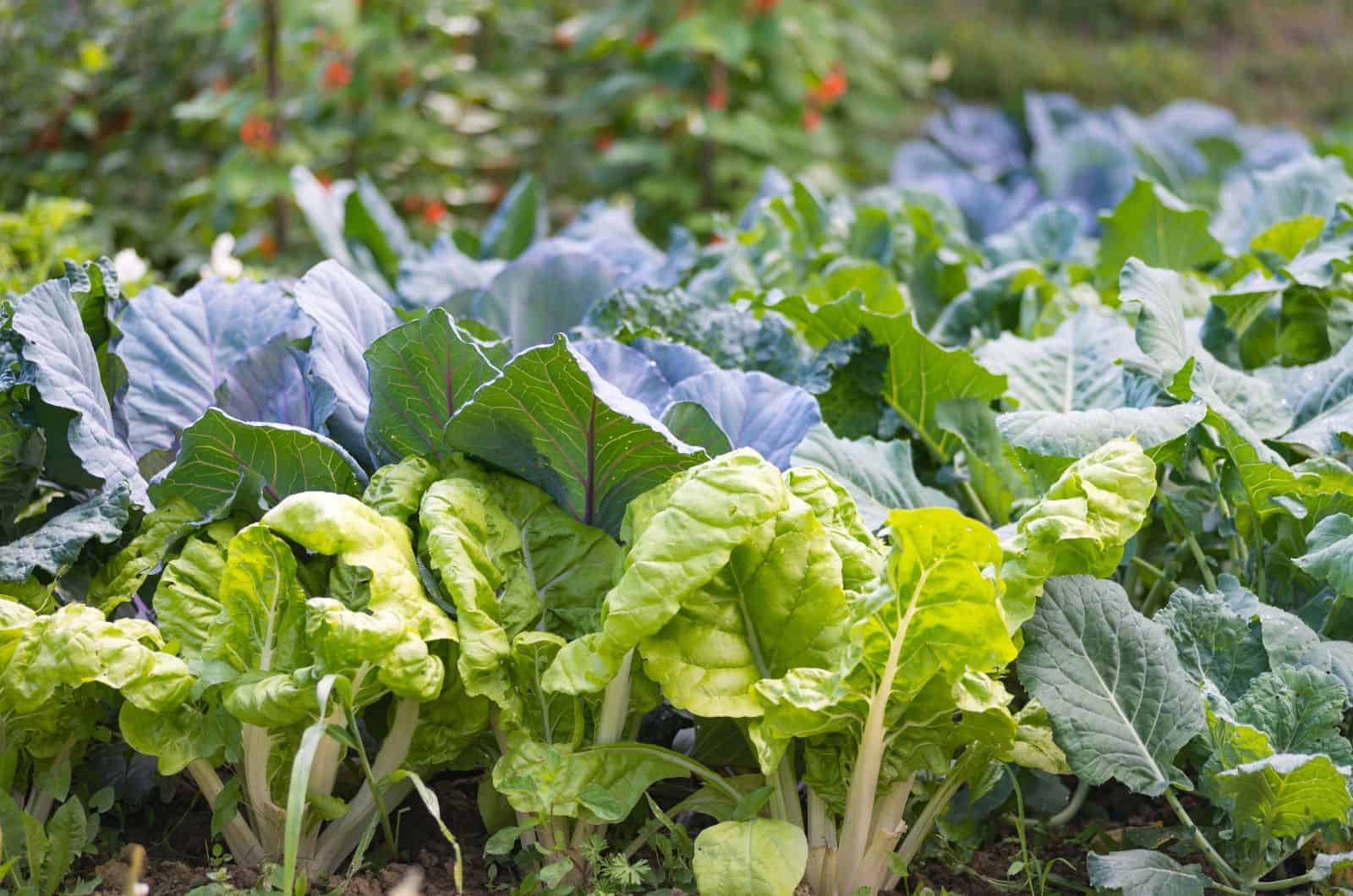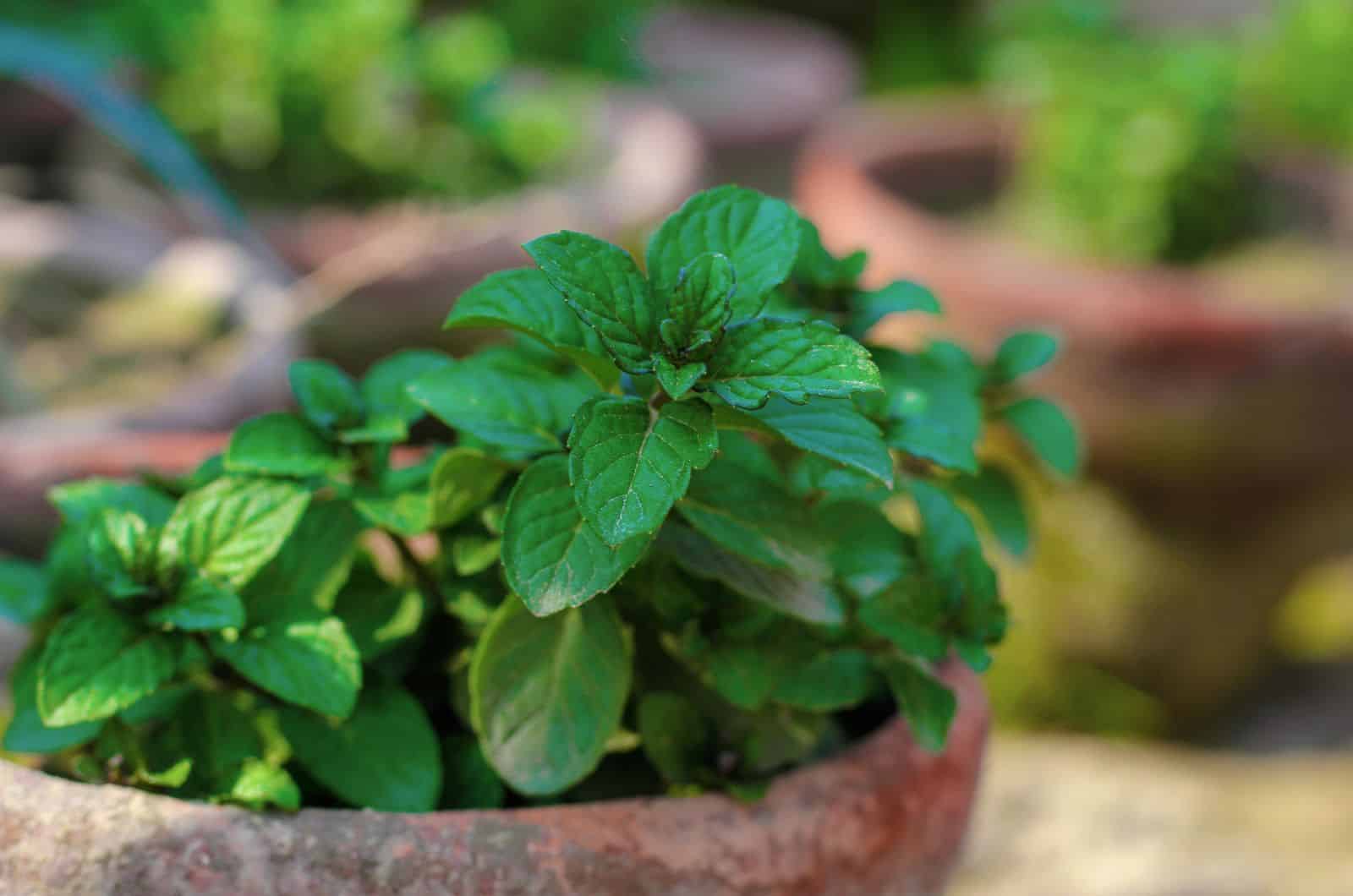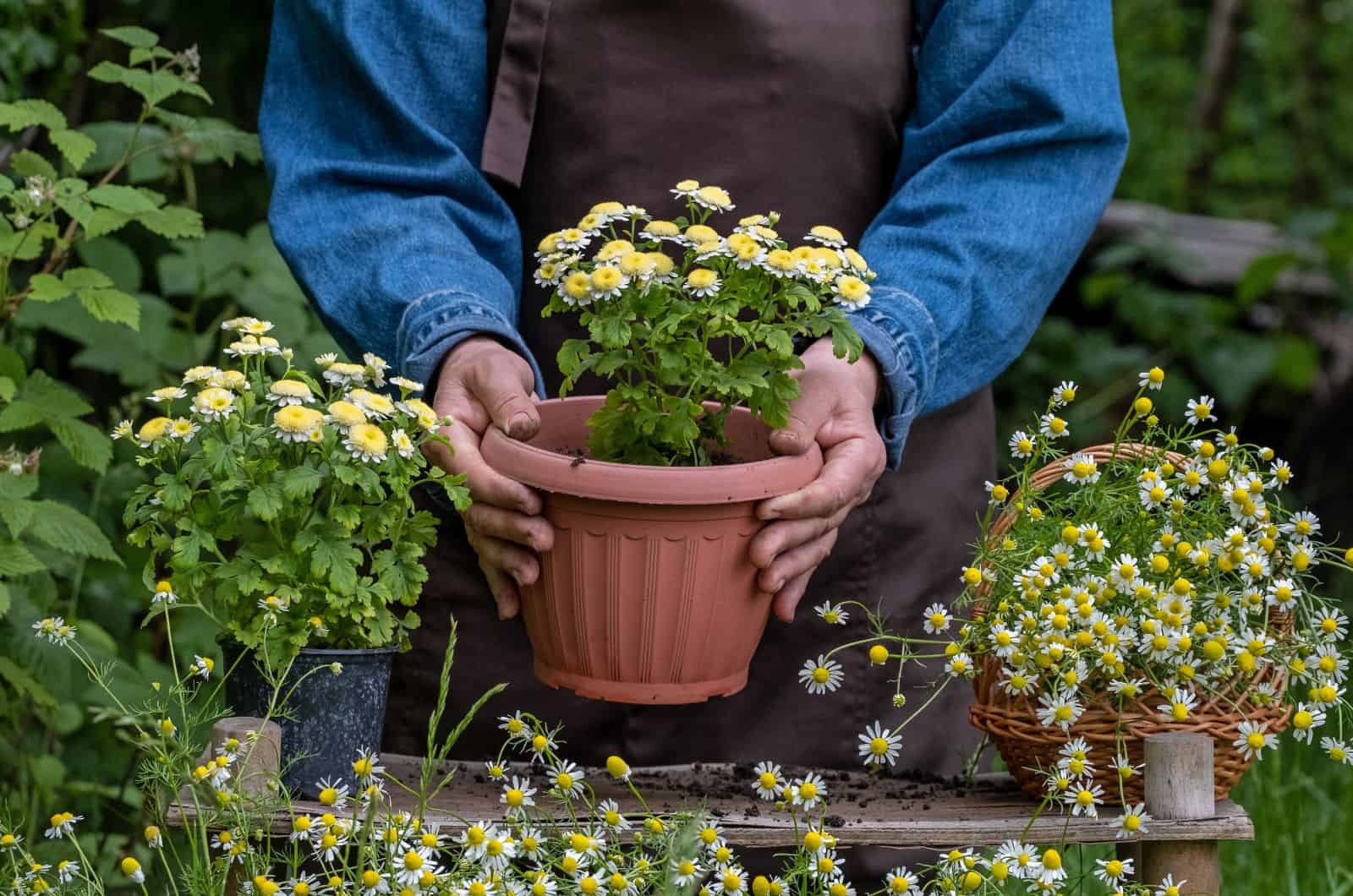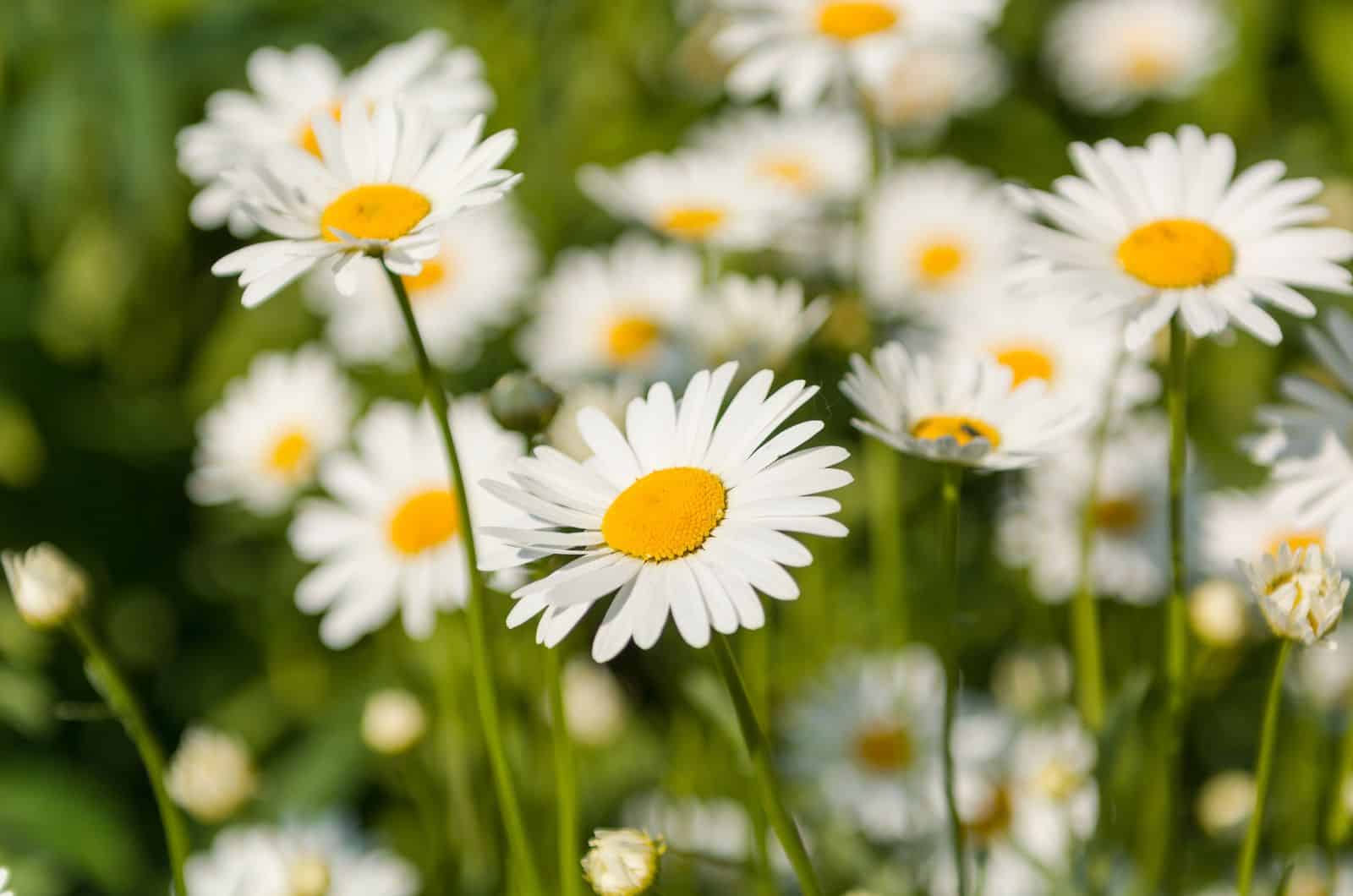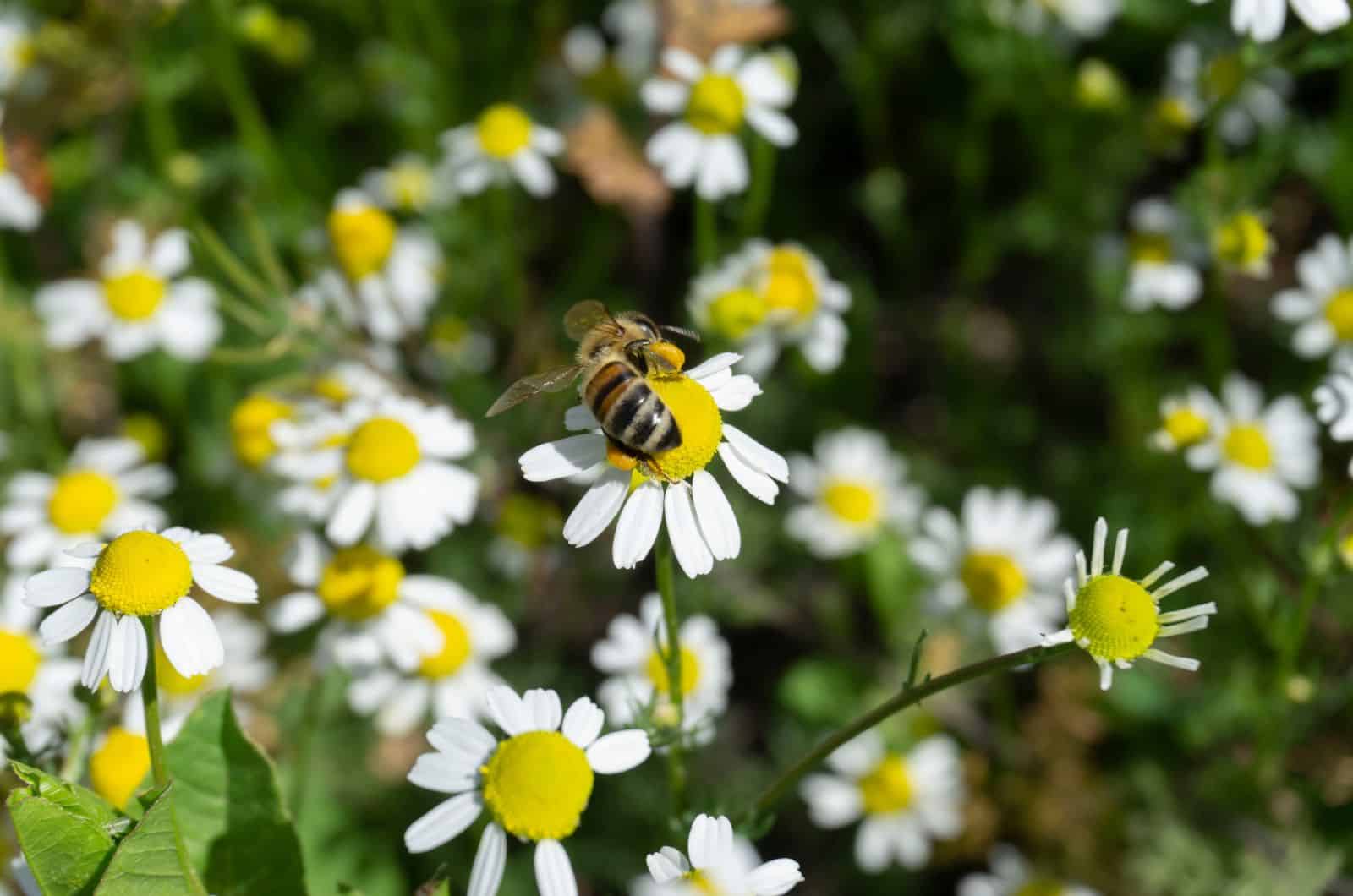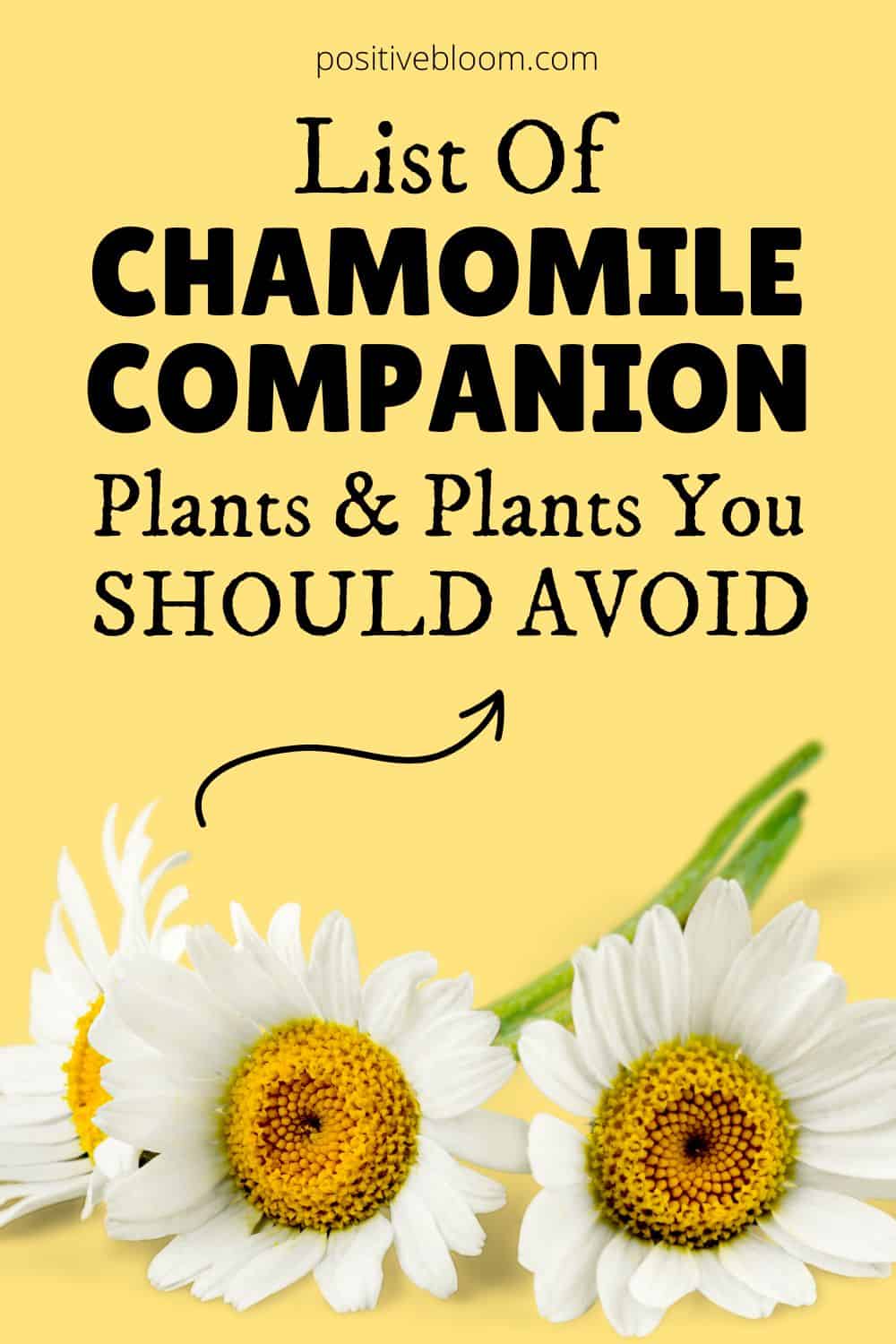Companion planting is a gardening hack that has been used for quite some time now. It refers to planting certain fruits, veggies, or herbs close to each other so they can have better growth and an improved harvest.
For instance, Nasturtium has shown to be a great companion plant that can attract pollinators and beneficial insects, while at the same time it deters annoying pests that can potentially harm your plants.
Today, we are going to talk about chamomile companion plants.
I think that we have all probably had chamomile tea at some point as it has numerous health benefits and a great taste! However, many people don’t know that chamomile is also a good companion plant.
Let’s now discuss the benefits of companion planting, and then see what plants should be kept near chamomile.
Benefits Of Chamomile Companion Plants
There are numerous benefits that come from companion planting, and we’ll now look at them more closely.
The basic principles of companion gardening include:
• Attracting beneficial insects — every flowering fruit and vegetable needs to get pollinated in order to produce crops. Sometimes, you might need a little help to attract pollinators like ladybugs and bees, especially if you live in an area with a low pollinator population.
• Deterring pests and insects — some insects, like cucumber beetles, cabbage worms, carrot flies, and cabbage moths (the list goes on and on!) can completely ruin your vegetable garden. Don’t even get me started on pest infestations, because these invisible creatures, especially aphids, have completely ruined my peppers! However, some plants with distinctive fragrances have the ability to repel these annoyances, and they serve as a natural form of pest control.
• Improving growth and taste — good companion plants like chamomile, marjoram, and summer savory release substances in the soil, which encourage better growth of the plants nearby, and at the same time improves the taste of their fruit.
• Enriching soil’s nutrients — we are used to plants absorbing nutrients from the soil. However, there are certain plants that release specific nutrients and improve the quality of the soil. For instance, beans are nitrogen-fixating plants, and they release nitrogen into the soil so that other plants can use it to grow lush foliage!
• Creating shade — some plants can grow very tall and vigorously, thus creating a shadow for plants that shouldn’t be kept in direct sunlight. These include asparagus and zucchini.
• Laying out ground covers — low-lying plants like oregano can be used as a ground cover, keeping the soil cool and protecting it from the sun.
Is Chamomile A Good Companion Plant?
Chamomile is a flowering herb that belongs to the Asteraceae family, and it is grown specifically for herbal and medicinal uses. I personally think that this herb can be planted for decorative purposes as well because the chamomile flowers look absolutely adorable!
Of course, another reason you should plant chamomile is for companion gardening.
Due to their unique fragrance, chamomiles are able to attract beneficial insects like hoverflies, ladybugs, wasps, and bees. These insects are crucial for the pollination of your plants and producing crops for harvest.
At the same time, chamomile is able to repel bad insects and pests that can munch on your plants and potentially ruin them — these include aphids, spider mites, and cabbage loopers. Their distinctive scent can also deter annoying mosquitos from your garden.
Their anti-bacterial and anti-fungal properties are also helpful for nearby trees and plants, and prevent fungal infections like powdery mildew, blight, mold, and many others. In fact, chamomile tea can be sprayed on seedlings in order to prevent damping-off (a fungal infection that kills young plants). In this case, watering your plants with tea might be a good option!
Another reason you should grow chamomile in your garden is that it releases specific chemicals into the soil, which improve the flavor of your crops. Additionally, you can use it to make delicious and soothing chamomile tea!
Types Of Chamomile
There are over 25 types of Chamomile — you could even try and grow a herb garden with chamomile plants only!
However, the most common types of Chamomile include Roman chamomile (Anthemis nobilis) and German chamomile (Matricaria chamomilla).
Roman chamomile is a low-growing plant that is very hardy and can grow in various conditions. It can be used as a ground cover, and in some regions it is considered as an invasive weed.
German chamomile is a bit taller, and it can grow up to 3 feet tall. Therefore, it cannot be grown as a ground cover. Instead, it is grown as a beautiful green shrub covered with tiny white flowers. This chamomile has a strong odor, and it is considered a wild type.
Both chamomile types are very hardy, though they thrive in full sun or partial shade. Both types can be used for teas, and they also have good companion features.
Chamomile Companion Plants
We have described companion planting and the benefits of chamomile to the plants nearby, so let’s now see what plants benefit from chamomiles the most!
When you are about to begin planting your vegetable garden, consider planting chamomile seeds near these plants!
1. Brassicas
Plant chamomile among your other greenery to add some color to your veggie garden and help many of your brassica plants grow better!
Because they are prone to a variety of pests and diseases, brassicas are known for being difficult to cultivate. Therefore, you need to take every precaution to promote their expansion and growth.
Cabbage worms, cabbage loopers, moths, and aphids are just a few bugs that can bother your Brassicas —they absolutely adore munching on the huge green leaves to steal all the nutrients necessary for growth and development.
Luckily, Chamomile produces a strong scent that can repel these annoyances!
In addition, they tend to grow taller than brassicas, shielding them from full sun exposure and giving them shade (any brassica absolutely loves shady areas). The same thing applies to the other herbs — for instance, yarrow is a great companion plant to Brassicas.
Brassicas include veggies like broccoli, cabbage, brussels sprouts, kale, cauliflower, kohlrabi, radishes, turnips, etc.
2. Cucumbers
Cucumbers are juicy veggies that make a great addition to many salads, and are also used to make cucumber water!
Cucumber seedlings can be somewhat difficult to grow, especially because these plants can easily get infested with cucumber beetles. The cucumber beetle carries a bacterium that damages a plant’s vascular system and makes it wilt. These cucumber beetles can spread the bacterium from one plant to another by eating infected ones.
Until you can actually see the damage, they stay undercover and slowly destroy your plant. Unfortunately, the plant cannot be saved after it has contracted the disease.
Fortunately, Chamomile is here to help!
The cucumber beetle is deterred by chamomile flowers and their distinctive fragrance, which is how they save your cucumber plants. Chamomile can also improve the flavor of cucumbers and encourage their growth.
3. Tomatoes
Chamomile is one of the best companions to tomatoes because it can repel all the pests and insects that could potentially harm them.
However, tomatoes are not hard to grow. Tomato seedlings are not as delicate as cucumber ones, and they don’t have any special requirements. All they need is healthy, well-draining soil with a pH range of 5.8 to 7. These plants enjoy full sun and high temperatures, which makes them ideal for growing in Arizona.
Read also: Growing Vegetables In Arizona: Is It Even Possible?
4. Fruit Trees
As we mentioned, chamomile’s antifungal and antibacterial properties are quite useful when growing trees. The worst enemies of many fruit trees are fungi — the most common ones are Cytospora, Valsa, and Leucostoma.
Luckily, planting chamomile near trees is a great option to prevent fungal infections.
These work best for apple trees and peach trees, though I believe that other fruit trees can benefit from chamomile. After all, they do no harm to the tree — some companion plants are good for certain plants, while they could potentially harm others.
This often does not include herbs as they don’t take a lot of nutrients from the soil. For instance, if you put two plants that require potassium for growth together, they will just end up competing with each other, and both plants won’t be able to grow properly.
5. Mint
Growing chamomile and mint together is kind of a gray area — some gardeners say that they shouldn’t be planted together because the chamomile can prevent the mint from producing essential oils that give them that specific minty scent.
So, if you primarily grow mint as a companion plant to deter pests and insects, the plant might not be as effective.
To be honest, I didn’t have these issues. All chamomile did to my mint was make it even mintier! If you are growing mint specifically for its flavor, then you won’t have any issues.
6. Beans
Beans are one of the easiest vegetables to grow from seeds. Iron, potassium, magnesium, fiber, vitamins A, K, and C, as well as other minerals that are extremely good for our bodies, are all present in these delicious and healthy veggies.
These beans belong to the Legume family, which is well-known for its ability to fix nitrogen, and are rich in nutrients. Nitrogen levels in the soil are not as high as those in the air.
Because they are a necessary nutrient for the production of fruit, green beans are typically grown in containers together with other vegetables. These veggies absorb the nitrogen from the air and convert it so that the plants can use it for growth and development.
But, how does the chamomile fit in?
Well, although beans are quite easy to grow, you can still improve their flavors and boost their growth. Don’t forget about their ability to repel bugs — plant chamomile to protect those nutritious beans from harmful pests and insects!
7. Squash
Even though squash aren’t as difficult to cultivate, there are still some issues when it comes to pest infestation. These veggies are susceptible to squash beetles.
Similarly to how cucumber beetles infest cucumbers, squash beetles also infest squash. Furthermore, they cause long-term damage to the plant because they can go undetected for some time.
Chamomile is often planted next to squash as they have a prominent scent that can deter squash beetles — they won’t even be able to detect squash next to this unique herb!
8. Basil
Basil is a delicious herb that is primarily used as a spice — its unique flavor makes a great addition to various meals, and it is often used for garnish.
Basil requires a lot of daily, direct sunshine to thrive. Additionally, the sun can help your basil grow stronger and resist diseases. You must ensure that the soil has sufficient drainage and is fertile. To make sure that the basil gets enough nutrients, I suggest adding compost or another kind of mulch to the soil.
Mulch can aid in the soil’s ability to retain water. Anything that encourages water retention is great for basil because it needs frequent watering. Underwatering is a major cause of basil plant wilting.
Another great way to improve basil’s unique flavor is by planting chamomile nearby. Chamomile can encourage the basil to produce more essential oils, thus improving its flavor. You can even use it for extraction, and you will end up with more basil oil which is great for the skin!
9. Other Veggies & Plants
Chamomile can encourage the growth of many veggies when planted nearby. The above-mentioned are just some of the common plants that make the most out of chamomile, although this flowering herb is beneficial to lots of plants!
Some of the other plants include:
• Chives
• Alliums
• Marigolds
• Coriander
• Celery
• Black-eyed Susan (flowering plant)
• Bleeding heart (flowering plant)
• Bee balm (flowering plant)
• Shrubs and trees like roses, dogwood, and lilacs
What Not To Plant With Chamomile
There are some plants that could do more damage than good when planted nearby chamomile. However, most gardeners say that there is no plant that can possibly harm chamomile or vice versa.
Let’s not forget about our mint situation — although I personally haven’t had any issues with it, anything is possible! Maybe some other gardener will have trouble growing mint and chamomile as companions.
There were also some cases regarding fennel, carrots, parsley, and parsnips — these plants attract pests that could potentially harm chamomile.
How To Grow Chamomile
There are a lot of great reasons to grow chamomile in your own garden. If you don’t have enough space, you should consider growing herbs in pots!
Herbs can be grown in grow bags, hanging baskets, or small pots as a container herb garden. If you have enough space, you can also think about growing them in raised garden beds. You might also try growing them in milk crates or other recycled items.
Even if you have a small apartment, you can grow these herbs on a windowsill or somewhere they will receive a lot of sunlight. They won’t take up much space, and you will have fresh herbs every day!
Let’s discuss how to plant chamomile before we learn more about its plant care.
How To Plant Chamomile
Roman chamomile can be started from seeds, while other chamomile varieties are usually planted as seedlings.
The first step is to create nutrient-rich, well-draining soil. To increase the nutrient level, you can fertilize before planting, though this is not necessary if you purchase high-quality soil.
If you are starting your herbs from seeds, dig a shallow hole in the ground large enough to accommodate the full root ball if you are planting a seedling.
Chamomile seeds should be sown in late spring as they need warmer temperatures for germination. If you live in a region with colder climates, then you can start your seedlings indoors.
If you have planted the seedlings, keep them in a sunny location. It is important that seedlings receive 6 to 8 hours of direct sunlight each day. If you can’t find a place with these light conditions, you can invest in some grow lights.
Read also: Can Grow Lights Burn Plants: Find Out All There Is To Know
Chamomile Plant Care Guide
Chamomile is very adaptable, and there are some wild types that grow perfectly well in various conditions. They need a lot of water, especially ones that are grown in pots.
You will have to water them more frequently during the summer because the soil dries out a lot quicker. Keep them out of the scorching sun on hot days because they might dry out.
If chamomile is not clipped regularly during the growing season, it might get leggy. Therefore, you should clip it to make sure that they grow dense and bushy!
To avoid excessive moisture destroying plants grown in pots over the winter, put them up on pot feet.
I would suggest you pick the flowers during summer instead of waiting until the end of the growing season. This will encourage new flowers to grow. These flowers are primarily used to make delicious chamomile tea, though they can also be used for cooking and garnishing as well.
These flowers can be dried and saved for later use — simply spread them on a tray in a single layer and keep them nice and warm. Don’t keep them in sunlight, though. When completely dry, store in an airtight container in a cool, dark spot.
Frequently Asked Questions
1. What is the difference between Roman chamomile and German chamomile?
While both chamomile types have the same requirements, their growth habits vary. Roman chamomile is a low-growing plant that can be used as a ground cover. In some regions, it is even considered invasive!
German chamomile is taller, and it can grow up to 3 feet tall. Therefore, it cannot be grown as a ground cover. Instead, it is grown as a beautiful green shrub covered with tiny white flowers.
They differ in fragrance as well — German chamomile smells more like sweet straw, whereas Roman chamomile has a light, crisp apple aroma.
2. What is the purpose of companion plants?
The purpose of companion plants is to improve the growth and development of plants nearby, protect them from invasive pests and insects, and improve the flavor of crops.
Some plants can even release nutrients into the soil to improve the soil’s fertility. This especially refers to beans, which have the ability to convert nitrogen from the air and release it into the soil so that the plants can use it.
A great companion plant can also attract beneficial insects and pollinators like bees, ladybugs, and hoverflies, and at the same time deter the ones that could potentially harm the plants (such as plant flies, cabbage worms, and aphids).
3. What does chamomile pair well with?
Chamomile is a great companion plant!
It can pair well with fruit trees, tomatoes, beans, cucumber, Brassica veggies, squash, basil, and a lot of flowering plants like Bee balm and Bleeding hearts. Some gardeners say that they shouldn’t be paired with mint, though I didn’t have any issues.
Plants that should be avoided include carrots, fennel, parsnips, and parsley, mainly because these plants attract pests that could potentially harm chamomile.
4. What Are The Benefits Of Planting Chamomile?
There are a lot of benefits that come from planting chamomile. First of all, you get to make your own chamomile tea whenever you want!
Chamomile is also a great companion plant — it can attract pollinators like hoverflies, wasps, and ladybugs. At the same time, it can repel annoying bugs like mosquitos, cabbage moths, and aphids.
Their anti-bacterial and anti-fungal properties are also helpful for nearby trees and plants for preventing fungal infections like powdery mildew, blight, mold, and many others.
Chamomile also releases a compound into the soil that can improve the flavor of fruits, and they produce lovely white flowers that can decorate any garden!
To Sum Up
As you can see, there are numerous chamomile companion plants that can be planted in a vegetable garden.
Planting chamomile near certain plants has lots of benefits — not only are they going to yield tastier crops and have better growth, but these plants will also be protected from annoying pests and bugs that tend to munch on their delicious leaves.
Additionally, your garden will look lovely with those delicate white flowers protruding from the greenery!
What’s also great is that chamomile doesn’t have any special requirements. It only needs daily sunshine and some water to grow happily.
I hope this article was helpful.
Until next time!
Like this post? Share or save it for later!

